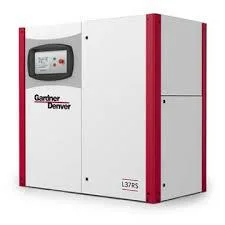
 Types of Compressors & Lubrication Methods
Types of Compressors & Lubrication MethodsCompressor types can also be defined by lubrication, i.e. whether lubricated or non-lubricated. Non-lubricated compressors are usually referred to as “oil free”. ISO 8573-1 Class Zero (2010) provides for a purity level that ensures no oil is in contact with the compressed air, and typically indicates no oil is used in the compressor, at all. “Oil-less” is another nomenclature used to indicate no oil used in the compressor. Oil free and oil-less are about as good as it gets when it comes to quality of compressed air. (There are treatments available to remove impurities that are ingested through the intake of the compressor, but the compressor does not add any impurities to the air stream.) Both reciprocating and rotary compressors use special materials (TeflonR piston rings or coating of rotors, for instance) and sealing media such as water sealing between rotors. Timing gears are also used to keep rotors separated.
Lubricated air compressors actually inject oil into the compression chamber to provide lubrication for the moving parts. Piston compressors will provide lubrication to the cylinder walls, rings, and running gear (rods, crank, bearings, etc.) by one of two methods. The first is “splash lubrication”. The piston rod will have a dipper affixed to the bottom which dips into the oil in the sump and splashes it up onto the running gear and pistons. This is the most common form. Pressure lubrication is an alternative to splash lubrication. This incorporates an oil pump which forces oil into the moving parts through drilled passages within the compressor. It will also incorporate an oil filter to remove contaminants from the recirculating oil.
Rotary compressors use differential pressure to circulate the oil throughout the lubrication system. The oil is pulled from the sump and processed through the oil cooler to reduce the inlet temperature of the oil before being injected into the compressor pump (air end). It then passes through the oil filter to remove impurities from the oil. It is then injected into the air end where it lubricates the bearings and gears (if any), seals between the rotors to prevent metal-to-metal contact, and keeps the temperature within an acceptable range. It is then delivered through an air-oil separator to remove the oil from the air stream and store it back in the sump. This process allows for some oil carryover into the air stream.
Centrifugal compressors are inherently oil free as no oil enters the compression chamber. Lubricated parts are separated from the compression chamber by air seals and oil seals, separated by an atmospheric vent area.



Notifications